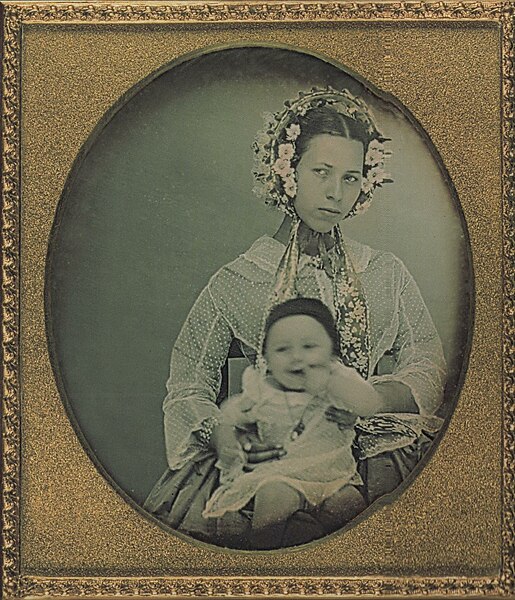"A simple white dress of spotted muslin has been made up the skirt trimmed with three deep flounces with a border of pale blue ribbon set on in a vandyked pattern. The corsage is high with a low inside body and has a basque as well as revers or bretelles of the muslin drooping very low on the shoulders. These the basque and the three frills which form the sleeves are trimmed with ribbon to correspond with the skirt below which is a fall of Honiton or Valenciennes lace. A blue sash ribbon with bow and flowing ends." -Godey's, June 1856Mine isn't nearly so fancy, but I like the elaborate details that went into this "simple" dress. Also, it documents the use of swiss dot in basques.
This thread at the Sewing Academy inspired me to make a sheer, white basque for summer Fort wear. For reference, the first two photogaphs on the conversation are these:
 |
| Attributed to "Albert Bisbee, OH, 1850s" Posted at Jessica Dean By Design |
 |
| "A Brazillian Woman and Her Baby, 1855" From The Wikimedia Commons |
The basques are both quite sheer, and the top one shows separate 'bodice' and 'skirt' portions on either side of a self-fabric waistband.
 |
| My white basque. |
Imagine that is a comfortable basque to wear in the summertime.
ReplyDeleteIt never occurred to me that a lining could be separate -- I always assumed (dangerous thing) that the lining would be attached at shoulders and waistline, at least. How sensible.